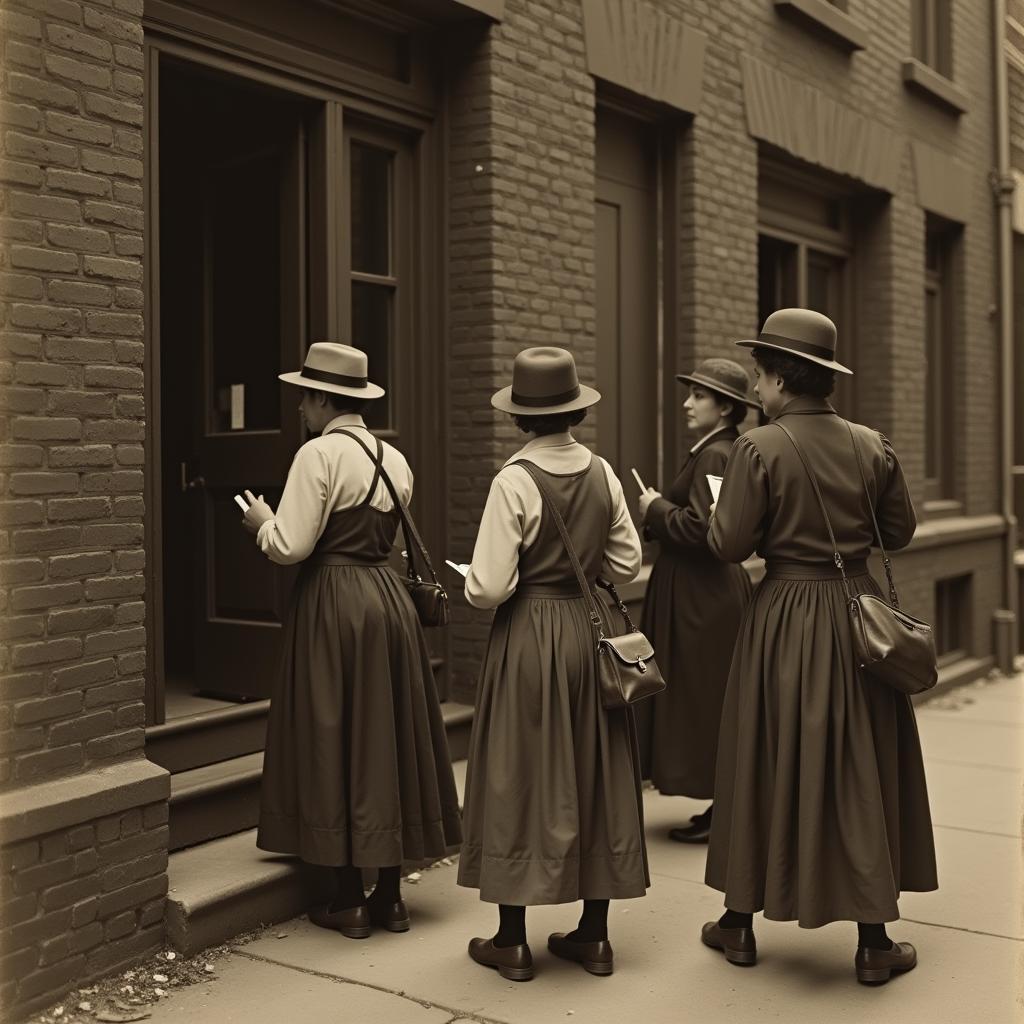Charity Organization Societies emerged in the late 19th century as a response to the growing problem of poverty and social inequality in rapidly industrializing cities. These organizations, often referred to as “COS,” sought to bring order and efficiency to the chaotic landscape of charitable giving, aiming to alleviate poverty through systematic investigation, coordinated relief efforts, and, crucially, moral elevation of the poor.
The Origins and Principles of Charity Organization Societies
The first charity organization society was founded in London in 1869, inspired by the work of Octavia Hill and other social reformers. The movement quickly spread to the United States, with the establishment of the Buffalo Charity Organization Society in 1877 marking its arrival on American shores. At the heart of the COS movement lay a belief in “scientific charity,” a data-driven approach to addressing poverty that emphasized:
- Centralized Coordination: COS aimed to streamline charitable giving by creating a central clearinghouse for information about those in need. This allowed them to avoid duplication of efforts and ensure that aid reached the most deserving cases.
- Thorough Investigation: Before providing assistance, COS volunteers, known as “friendly visitors,” would conduct detailed investigations into the circumstances of those requesting aid. This often involved home visits and interviews with neighbors and employers to verify claims of need and assess the moral character of the applicant.
- Discrimination Between the “Deserving” and “Undeserving” Poor: A key tenet of the COS philosophy was the distinction between the “deserving” poor, those deemed to be of good moral character and deserving of assistance, and the “undeserving” poor, often seen as lazy, immoral, and responsible for their own plight. This distinction had a profound impact on the type of aid provided, with the “deserving” poor receiving material assistance and moral guidance, while the “undeserving” were often relegated to punitive institutions like workhouses.
- Moral Upliftment: COS believed that poverty was not just a matter of material deprivation but also a symptom of moral failings. As such, they placed a strong emphasis on moral upliftment, providing guidance on budgeting, hygiene, and other aspects of “proper” living.
 Charity Organization Society Volunteers
Charity Organization Society Volunteers
The Legacy of Charity Organization Societies
The COS movement left a lasting impact on the field of social work, shaping the development of professional casework and influencing the evolution of social welfare policies. However, it was not without its critics. Some argued that the emphasis on moral judgment and the distinction between the deserving and undeserving poor were harsh and demeaning. Others criticized the COS focus on individual failings rather than systemic inequalities as the root cause of poverty.
Despite their flaws, charity organization societies played a significant role in addressing the challenges of poverty and social inequality in their time. Their emphasis on coordinated relief efforts, systematic investigation, and professionalization of charitable work laid the groundwork for modern social work practices.
FAQs About Charity Organization Societies
1. What was the primary goal of charity organization societies?
The primary goal of COS was to alleviate poverty through a systematic and coordinated approach, focusing on investigation, relief, and moral upliftment.
2. How did charity organization societies distinguish between the “deserving” and “undeserving” poor?
COS relied on investigations and interviews to assess the moral character and perceived worthiness of aid applicants. Those deemed to be of good moral character and struggling due to circumstances beyond their control were considered “deserving,” while those seen as responsible for their poverty due to perceived character flaws were labeled “undeserving.”
3. What is “scientific charity,” and how did it shape the work of COS?
“Scientific charity” referred to a data-driven approach to addressing poverty. It emphasized thorough investigation, centralized coordination of resources, and a focus on efficiency and measurable outcomes.
4. How did charity organization societies influence the development of modern social work?
COS contributed to the professionalization of social work by establishing systematic methods for casework, emphasizing the importance of investigation and assessment, and advocating for a more coordinated approach to charitable giving.
5. What were some of the criticisms leveled against charity organization societies?
Critics argued that COS’s emphasis on moral judgment was demeaning and that their focus on individual failings ignored the larger societal factors contributing to poverty.
For more information on the history of social welfare and the role of organizations like Charity Organization Societies and Settlement Houses, explore our other articles on the Society For Peace website. You can also learn about specific organizations like the Federation of Hellenic Societies of Greater New York and the Orphan Asylum Society to gain a deeper understanding of the evolution of charitable work. If you’re curious about the work of animal welfare organizations and whether humane societies put animals down or whether the Humane Society is a good charity, we have resources to address those questions as well.
Remember, understanding the complexities of social issues and the evolution of charitable organizations is crucial for fostering empathy and working towards a more just and compassionate world. If you need support, please contact our 24/7 hotline: 02043854663 or email us at [email protected]. You can also visit our office located at Khu 34, Bắc Giang, 260000, Vietnam.